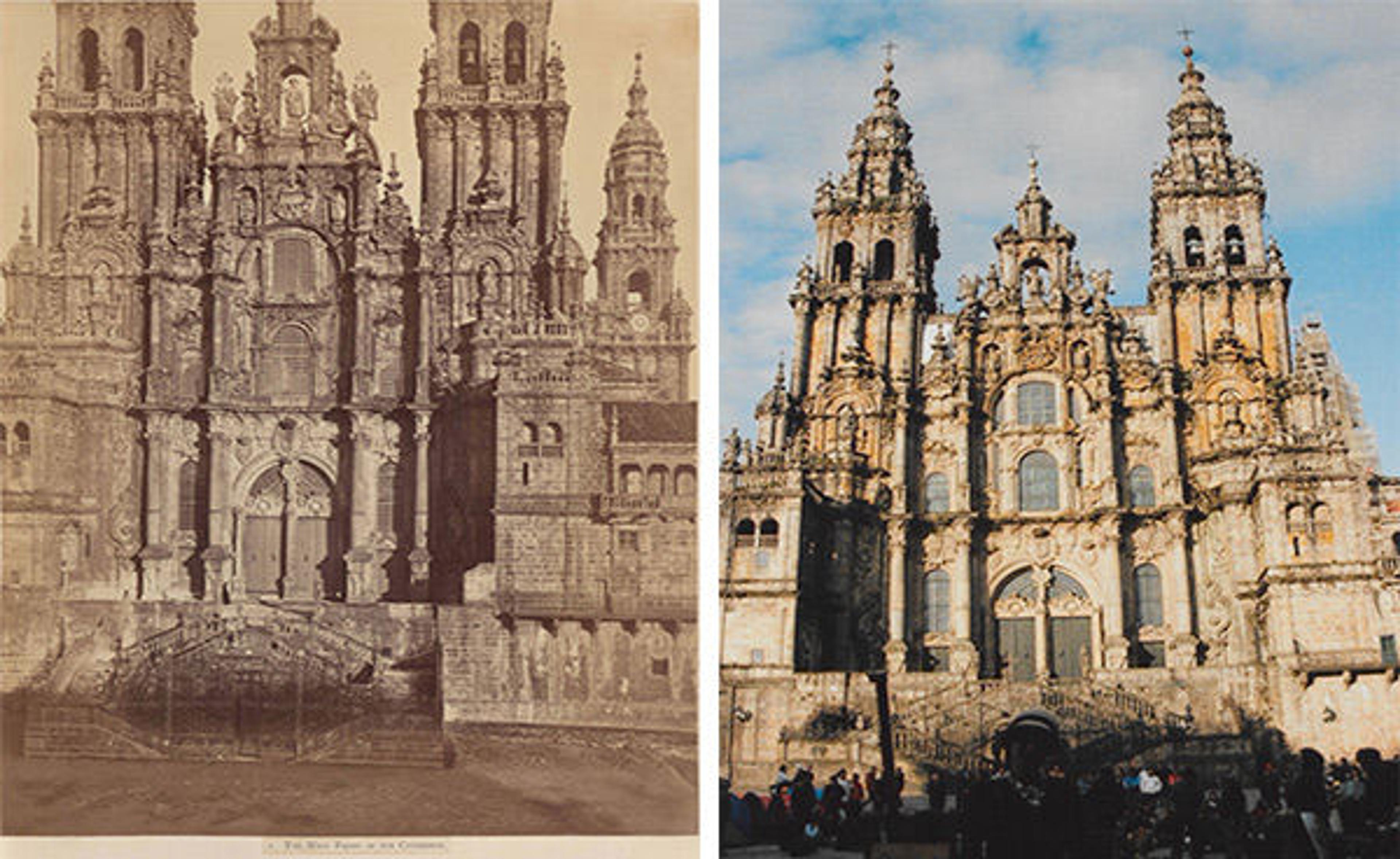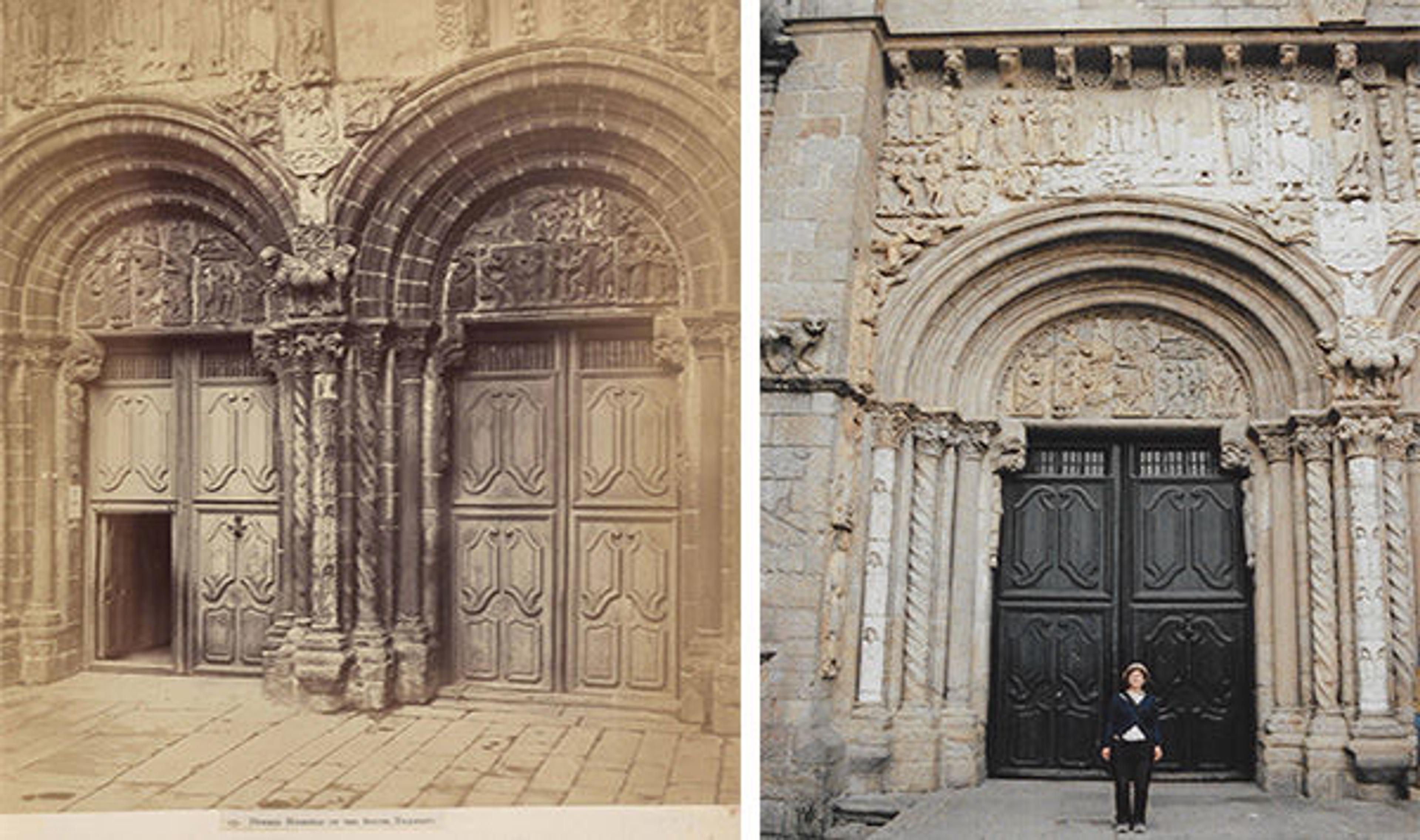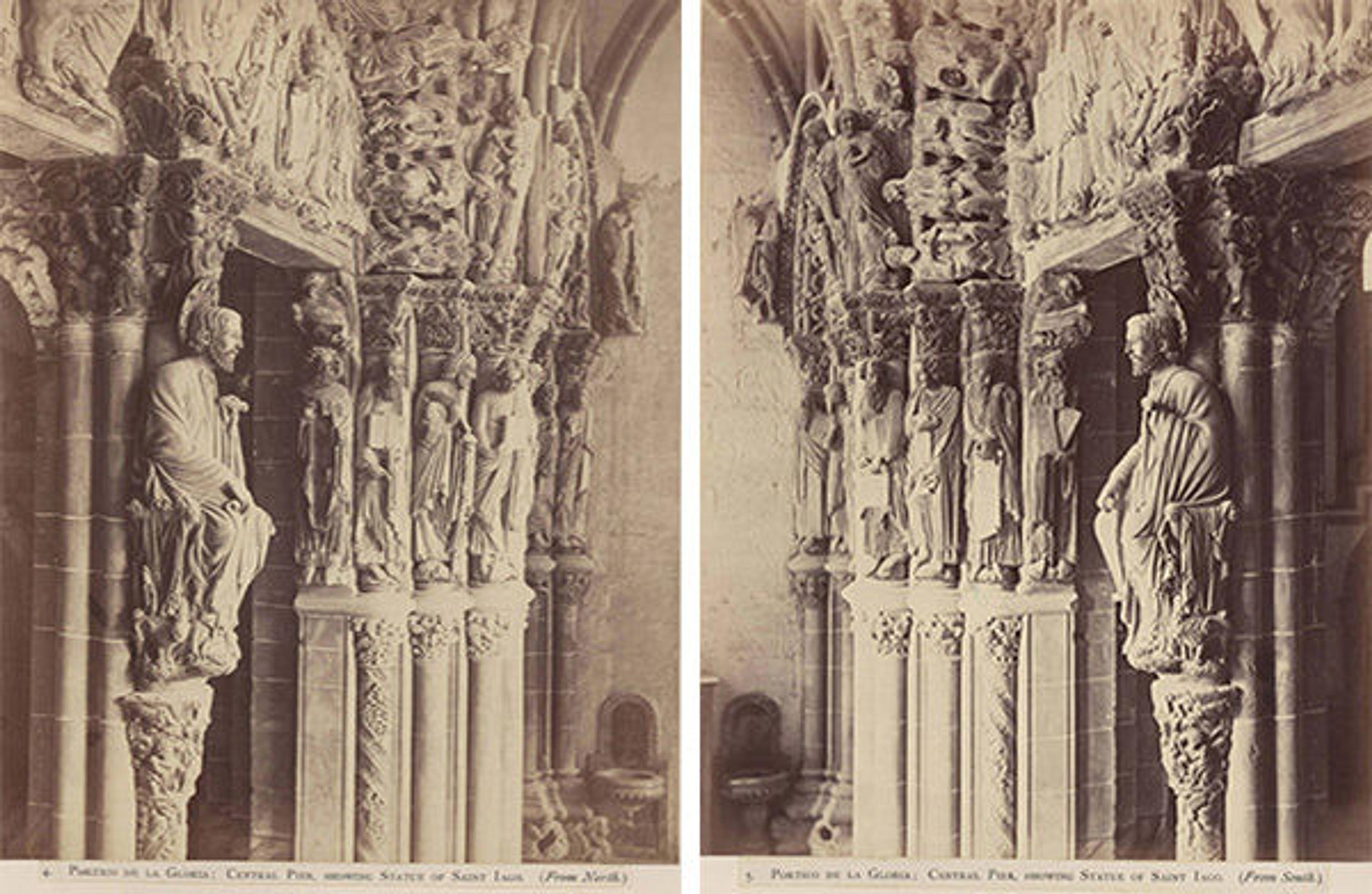
Left: West front of the Cathedral of Santiago de Compostella in Spain, in 1868. Photograph by Charles Thurston Thompson. Right: West front of the cathedral, in 2011. All 2011 photos courtesy of the author
«In our technology-saturated world, photographs are everywhere. Images are so easy to capture and share with friends and family around the world that most of us take them for granted. But in the mid-nineteenth century, when photography was still a relatively new medium, documentary photographers like Charles Thurston Thompson (1816–1868), were able to use new photographic technology to bring images from all over the world back home with them.»
Much of Thompson's career was based at the South Kensington Museum (now the Victoria and Albert Museum), where he was the superintendent of photography beginning in 1856, as well as the official photographer of the Department of Science and Art. Upon his death in 1868, Thompson left behind approximately ten thousand negatives. Soon after, the Arundel Society for Promoting the Knowledge of Art published twenty of his photographs in the volume The Cathedral of Santiago de Compostella in Spain. This book is held by fewer than ten libraries in the United States, as well as a handful of libraries in Europe. Watson Library is fortunate to have a copy, which we recently digitized.
Visitors to Santiago de Compostela continue to take pictures of the sumptuously decorated church and the surrounding village, and are now able to easily share them with others. I took a pilgrimage of my own to Santiago de Compostela back in 2011—albeit by airplane, not by foot.
The Baroque west entrance to the cathedral, also known as the obradoiro, was constructed during the eighteenth century. When Thompson took these photographs, this entrance was just over one hundred years old. Comparing these two photographs (shown above), you will see that little has changed except for the amount of visitors standing in front of the building.
Santiago de Compostela has been an important pilgrimage site for Christians since the Middle Ages. Considered by some to be the burial place of the remains of Saint James, pilgrims would make the journey there to collect special badges to show to others as proof of their pilgrimage. The Museum has many pilgrim badges in its collection, including one with a shell, the attribute of Saint James.

General view of the cathedral and adjoining buildings. Photograph by Charles Thurston Thompson
The Romanesque Puerta de las Platerias, or Silversmith's Portal, includes both Old and New Testament figures on the two tympanums and frieze above. If you look closely at the pictures below, you may be able to find Adam and Eve being expelled from the Garden of Eden, the mythological Sagittarius, lions, and the story of the temptation of Christ. Looking at these two pictures side by side, you can also see how much conservation work has been done on this portal in the last 150 years—the doorway in the image on the right is far cleaner than the one on the left.

Left: Puerta de las Platerias, in 1868. Photograph by Charles Thurston Thompson. Right: Puerta de las Platerias, in 2011
The Romanesque Portico de la Gloria, sculpted by Maestro Mateo, features Saint James in the center, flanked by New Testament saints on his left, including Peter, Paul, James the Greater, and John the Baptist, and Old Testament prophets on his right, including Jeremiah, Daniel, Isaiah, and Moses. These saints and prophets can be identified by their attributes: Saint Peter holds the keys to the gates of heaven, while Moses holds the tablets with the Ten Commandments.

Left: View of the Portico de la Gloria, showing Saint James and New Testament saints. Right: View of the Portico de la Gloria, showing Saint James and Old Testament prophets. Photographs by Charles Thurston Thompson
Although twelve out of the twenty plates in this publication are of the Portico de la Gloria, researchers can also view images of additional entrances such as the Pilgrims' Gate and the extravagantly decorated high altar in the chapel of the reliquary.

High altar in the chapel of the reliquary. Photograph by Charles Thurston Thompson
Researchers interested in finding out more about Santiago de Compostela and medieval art can find additional resources through Watson Library's Digital Collections, which include The Art of Medieval Spain: A.D. 500–1200, The Cloisters: Studies in Honor of the Fiftieth Anniversary, and Mirror of the Medieval World.